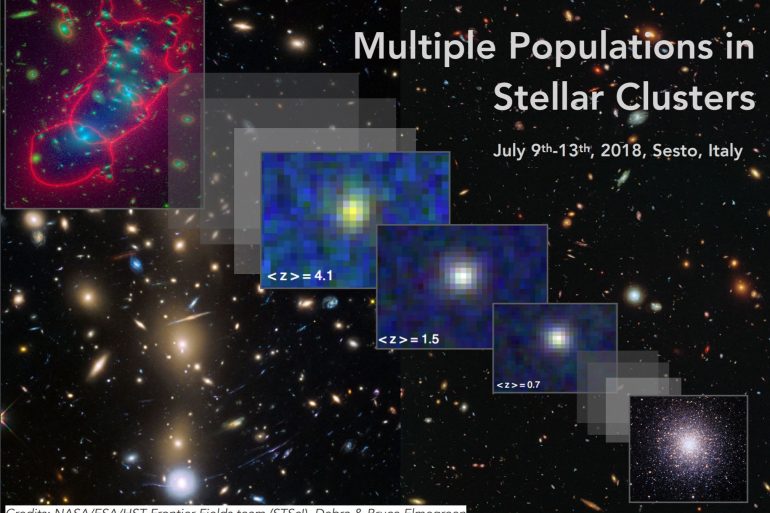
Multiple Populations in Stellar Clusters
LOCATION: Haus Sexten - Via Dolomiti 45, 39030, Sexten
DETAILS
Recent Progress and Future Directions
In the past two decades, our understanding of globular clusters (GCs) and their formation has undergone a radical change, revitalising cluster research with new discoveries and new questions. A variety of photometric and spectroscopic evidence has been accumulating to suggest that GCs have experienced own peculiar chemical evolution, with stars showing intrinsic inhomogeneity in the abundances of elements such as He, C, N, O, and Na. Crucially, light element star-to-star variations in light elements are generally not associated to Fe or heavier element spreads.
These chemical abundance anomalies are known as “multiple populations” and no theory put forward so far has been able to satisfactory reproduce observations. Since our last Sexten CfA workshop on this topic (2016), the field has advanced rapidly. Multiple populations have now been found in clusters as young as 2 Gyr, showing that they are not of cosmological origin (i.e. that they only can form in the special conditions of the high-redshift Universe), although interestingly they appear to be absent in all clusters younger than this. This has opened an entire new perspective on the problem. Additionally, the results from the HST UV Legacy Survey have found that the fraction of stars that show the anomalous chemical abundances increases with cluster mass but also that the amount of enrichment (i.e. how large the spreads are) is also a direct function of cluster mass. Hence, the cause of multiple populations must be directly linked to some property of the host cluster, which is not expected for any of the scenarios that have invoked enrichment from stellar sources. Finally, there is growing evidence that the multiple population phenomenon is not restricted to massive star clusters, with tentative evidence of multiple populations in the bulge of the Milky Way, massive early type galaxies and ultra-compact dwarf galaxies. The origin of multiple populations within GCs is arguably the most active research field within the GC community at present, with more than 350 published papers in the last 5 years.
Despite the recent advances from the modelling side, theory is still far behind observations and is unlikely that most of the questions on GC formation and evolution will be answered without a new insight or breakthrough. This workshop is meant as a continuation of our previous workshops on stellar clusters in 2012, 2014 and 2016, and will compliment another summer 2018 workshop (PI A. Adamo) “Linking Young and Ancient Globular Clusters”. We expect that a number of participants will attend both meetings if held in back-to-back weeks. We will review and critically discuss our current understanding of this elusive phenomenon from both the observational and theoretical side. Our main goal is to generate fresh perspectives and explore new avenues of study by bringing together theorists and observers working on different aspects of the multiple stellar populations phenomenon. Unlike our previous two workshops, we would like to have a more focussed discussion with a smaller number of participants (30 − 40 – instead of 80 − 100).
Major topics to be discussed are given below.
Key topics
• Global Properties of Multiple Populations Across the Full Cluster Population • In-Depth Studies of Individual Clusters
• Re-Evaluation of Theories for the Origin of Multiple Populations
• New Insights from Young and Intermediate Aged Clusters
• Multiple Populations on Galactic Scales • Multiple populations in the Era of the Large Surveys
• Stepping Out of the Local Group: Multiple Populations Through Integrated Light Stuides
• Kinematic Differences of the Sub-Populations
RELATED FILES
FEE
300 Eur
WORKSHOP CODE FOR PAYMENT
ORGANIZERS
Organisers (co-chair) Dr. Carmela Lardo (Lausanne, CH) (co-chair) Prof. Nate Bastian (Liverpool, UK) Dr. Alessio Mucciarelli (Bologna, IT) Prof. Søren Larsen (Nijmegen, NL)
